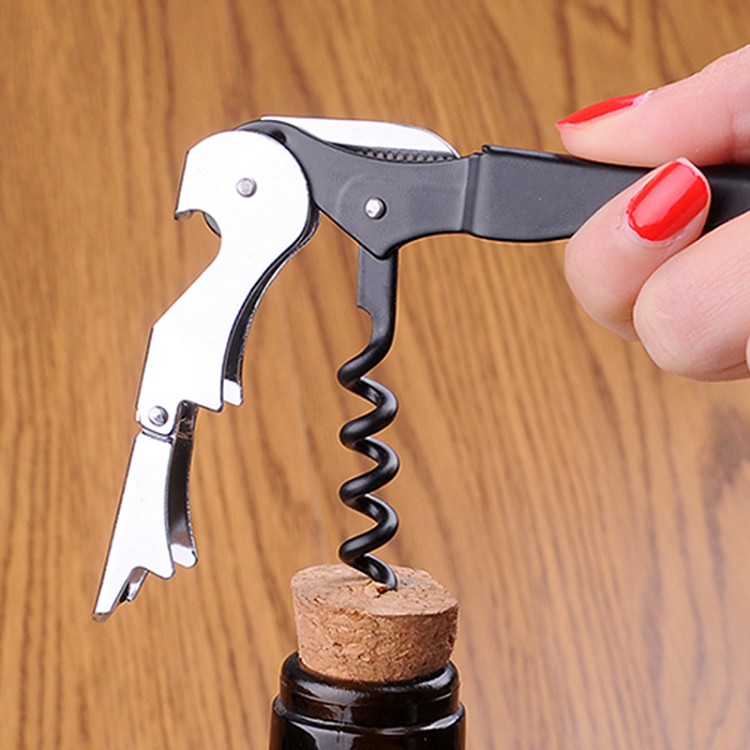Time:2022-04-18 Views:
Many wines are sealed with corks. However, whether you are a novice wine opener or a seasoned wine opener, we can all encounter the awkward scene of the cork breaking when opening a bottle. At present, the fine wine has encountered a broken block, which is very heart-stopping. Therefore, in order to avoid embarrassment, we need to master some skills.
1. Why is it blocked?
In fact, it is normal for the cork to break when the bottle is opened. The reasons for the broken cork mainly include the following aspects.
1. Improper storage of wine
During long-term storage, some wines will not be able to soak the cork if they are not laid flat. Or the environmental humidity is too low, causing the cork to be too dry, lose its elasticity, and become fragile and easily broken, so it is more likely to break the cork when opening the wine.

2. Using an unsuitable corkscrew or an irregular corkscrew method
In general, thick, blunt corkscrews will break the cork more easily than thin, pointed ones. However, even with the correct corkscrew, improper use can increase the risk of cork breakage, such as when using a hippocampus to open the bottle, if the corkscrew is not aligned vertically in the center of the cork, or the corkscrew If the depth of the cork is not correct, the direction of applying pressure to the cork will be deviated, so it is easy to cause the breakage of the cork.
2. How to avoid blockage?
First of all, when storing wine for a long time, it is necessary to lay the wine sealed with a cork on a flat surface to keep the cork in contact with the wine liquid to prevent the cork from drying out and losing its elasticity.
Secondly, if you want to remove the cork completely, you need to choose a suitable corkscrew. The seahorse knife is a commonly used bottle opener. When using it, you must master certain skills to avoid the breakage of the cork: after removing the bottle seal, align the spiral cone with the center of the cork, then plunge it into it, slowly rotate it until it is upright, and then Slowly screw in the cork in a clockwise direction, and stop rotating when the exposed part of the screw is about half a ring; fasten the bayonet on the handle to the bottle mouth, use the lever principle to lift the handle on the other side once or twice, and then Shake the cork gently until it is removed. In addition, the spiral cone needs to be sharp, otherwise it is likely to be off-center when drilling into the cork.
An old wine corkscrew is a better choice for opening old vintages. Because the cork of old wine is relatively fragile, it is easy to break the cork with a seahorse knife. The old wine corkscrew, also known as the Ah-So corkscrew, has a very simple structure and consists of 2 iron pieces of different lengths. Its use method is as follows: after removing the bottle seal, slowly insert two iron pieces along the gap between the cork and the bottle mouth, until the iron pieces tightly clamp the entire cork; then hold the handle, Slowly rotate counterclockwise and apply upward force to gradually pull out the cork.
3. How to resolve the problem of blockage?
When opening the bottle, if the cork breaks, you don’t have to panic. In most cases, as long as the follow-up operations are done properly, the entire bottle of wine will not be destroyed. If most of the cork is stuck in the neck, you can still use the corkscrew to pull it out. Take the hippocampus knife as an example: first clean the bottle mouth where the cork is broken, then find the position and angle of the corkscrew screwed in again, and then slowly pull out the cork, while paying attention to the condition of the cork. Another method is to use an old wine corkscrew, which works well for weaker corks.
If none of the above methods work, you can use the last method: first clean the cork debris from the bottle mouth, then gently push the cork stuck in the bottle into the wine, and then change the bottle as soon as possible to filter to remove the wine residues in. But this method is not recommended, because it is easy to contaminate the wine.
